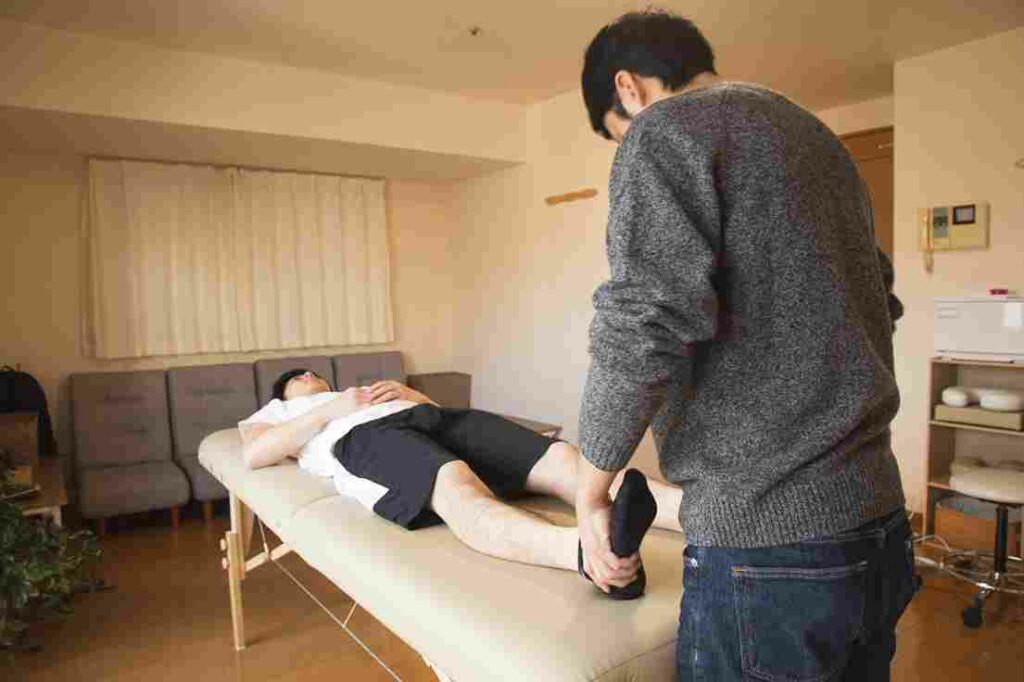Physical therapy is one of the most important things you can do after a hospital stay or injury. It helps to heal and improve your muscles, maintain a healthy functioning nervous system, and take care of other health issues that may have come about because of your injury. However, not everyone understands what physical therapy is, what it entails and what might happen before they walk in the door. Read on to find out more!
Contents
- 1 What Is Physical Therapy?
- 2 What Are The The Most Common Settings Of Physical Therapy?
- 2.1 Outpatient Clinic
- 2.2 Hospitals
- 2.3 Patient’s Home
- 2.4 How To Choose Different Physical Therapy Settings?
- 2.5 1. What is your budget?
- 2.6 2. What type of insurance do you have?
- 2.7 3. What are your treatment goals?
- 2.8 4. What are your preferences?
- 2.9 5. What is the location?
- 2.10 6. What are the hours?
- 2.11 7. What is the staff like?
- 3 What to Expect in a Physical Therapy Setting?
- 4 Tips for navigating a Physical Therapy Setting
- 5 Conclusion
What Is Physical Therapy?

If you are considering physical therapy, it is important to choose a qualified therapist who has experience treating your particular condition. You should also feel comfortable communicating with your therapist about your goals and expectations for treatment.
What Are The The Most Common Settings Of Physical Therapy?

The most common set of physical therapy settings is private offices, clinics hospitals, patient’s homes, and nursing homes.
Outpatient Clinic
Most physical therapy settings are outpatient clinics. This means you will likely go to the clinic for your appointments and then return home afterward. However, there are other types of physical therapy settings as well.
Hospitals
Inpatient physical therapy setting is usually found in hospitals. If you have had a recent surgery or have been in a hospital for an extended period of time, you may do your physical therapy in the hospital.
Patient’s Home
A home health physical therapy setting is another option. If you are unable to leave your home or it is difficult for you to get to a clinic, home health PT may be a good option for you. A therapist will come to your home and work with you on exercises and activities that are safe for you to do at home.
There are also many different types of specialty clinics where you can receive physical therapy. These include sports medicine clinics, women’s health clinics, and pediatrics clinics, among others.
How To Choose Different Physical Therapy Settings?
If you are like most people, you probably have never had to choose a physical therapy setting before. With so many different types of facilities out there, it can be hard to know which one is right for you. Here are some things to keep in mind when choosing a physical therapy setting:
1. What is your budget?
Physical therapy can be expensive, so it is important to consider your budget when choosing a setting. If cost is a concern, you may want to consider seeking treatment at a physical therapy clinic or hospital outpatient department. These settings typically offer more affordable rates than private practices.
2. What type of insurance do you have?
Insurance coverage can vary greatly depending on the type of facility you choose. For example, if you have Medicare, you may only be covered for treatment at a hospital outpatient department or skilled nursing facility. If you have private insurance, however, you may have more flexibility in terms of choosing a provider.
3. What are your treatment goals?
Before selecting a physical therapy setting, it is important to think about your treatment goals. Are you looking for long-term rehabilitation or short-term relief from pain? Do you need highly specialized care or general fitness and wellness services? Once you know what you are hoping to get out of treatment, you can narrow down your options and choose the setting that best meets your needs.
4. What are your preferences?
When it comes to choosing a physical therapy setting, personal preferences can play a big role. For instance, some people prefer the one-on-one attention they receive in private practice, while others feel more comfortable in a group setting. Consider your personality and needs when making your decision.
5. What is the location?
The location of the physical therapy setting can also be an important consideration. If you live in a rural area, you may have limited options for care. On the other hand, if you live in a large city, you may have many different types of facilities to choose from. Consider both your current location and any future plans you have when making your decision.
6. What are the hours?
Another important consideration when choosing a physical therapy setting is the hours of operation. If you work full-time, you will need to find a facility that offers evening or weekend hours. On the other hand, if you are retired or have a flexible schedule, you may be able to find a provider that offers daytime appointments.
7. What is the staff like?
When selecting a physical therapy setting, it is also important to consider the staff. Do the therapists have experience treating your condition? Do they use evidence-based methods? Do they take a patient-centered approach?
These are all important factors to consider when making your decision.
What to Expect in a Physical Therapy Setting?
Most physical therapy sessions last for 30 to 60 minutes. During this time, the physical therapist will work with the patient to help them regain their strength and range of motion. The therapist may also give the patient some exercises to do at home to help speed up their recovery.
If you are new to the world of physical therapy, you may be wondering what to expect when you walk into a PT facility.
Here is a quick guide to help you understand the basics of a PT setting:
Medical History and Current Symptoms
First, you will likely meet with a physical therapist (PT) who will ask you about your medical history and current symptoms. They will then perform a physical examination, which may include testing your range of motion, strength, and flexibility. Based on this information, the PT will develop a treatment plan specifically for you.
Individual Needs
Treatment in a Physical therapy setting may vary depending on your individual needs, but typically includes exercises and/or hands-on therapies such as massage or joint mobilization. The PT will progress your treatments as you improve, ultimately working towards your goals of reducing pain and improving function.
You can expect to see results from physical therapy within a few visits, but the number of sessions needed varies from person to person. In general, most people need 2-3 times per week for 4-6 weeks to achieve their desired outcomes.
Don’t hesitate to ask your therapist if you have any questions or concerns about what to expect in a PT setting! They are there to help you every step of the way.
Tips for navigating a Physical Therapy Setting
If you’re new to the world of physical therapy, the process can seem a bit daunting. But don’t worry! We’ve got you covered with some tips for navigating a physical therapy setting:
Communicate
First and foremost, be sure to communicate with your therapist. Let them know what your goals are and what you’re hoping to achieve through physical therapy. This will help them develop a treatment plan that’s tailored specifically for you.
Commitment and effort
Next, be prepared to work hard. Physical therapy requires commitment and effort on your part, but it’s worth it! Be sure to follow your therapist’s instructions and do your best to stay on track.
Ask Questions
Last but not least, don’t be afraid to ask questions. If you’re unsure about something or have concerns, be sure to speak up. Your therapist is there to help you, so they’ll be more than happy to answer any questions you may have.
Be patience
Finally, be patient. The road to recovery can be long, but stick with it and you’ll eventually reach your goals.
These are some tips, which are considered while looking for a physical therapist.
Conclusion
If you’re considering physical therapy settings to help with an injury or pain, it’s important to know what you can expect from the setting and the treatments. Physical therapy is a great way to heal without resorting to medication or surgery, and it can help you get back to your life quickly. With the right therapist and treatment plan, physical therapy can be an extremely effective way to get relief from pain and improve your quality of life.
Physical Therapy help patients recover from pain. If you’re experiencing Back pain, Shoulder pain, Knee pain, Neck pain, Elbow pain, Hip pain, or Arthritis pain, a physical therapist at MantraCare can help: Book a physiotherapy session.


